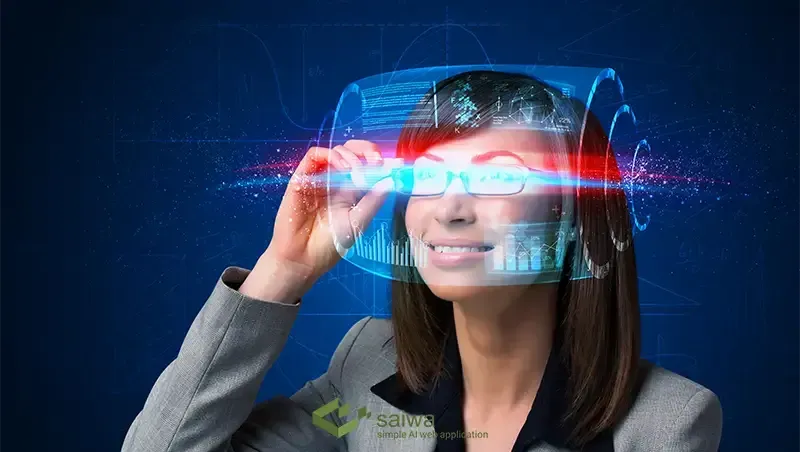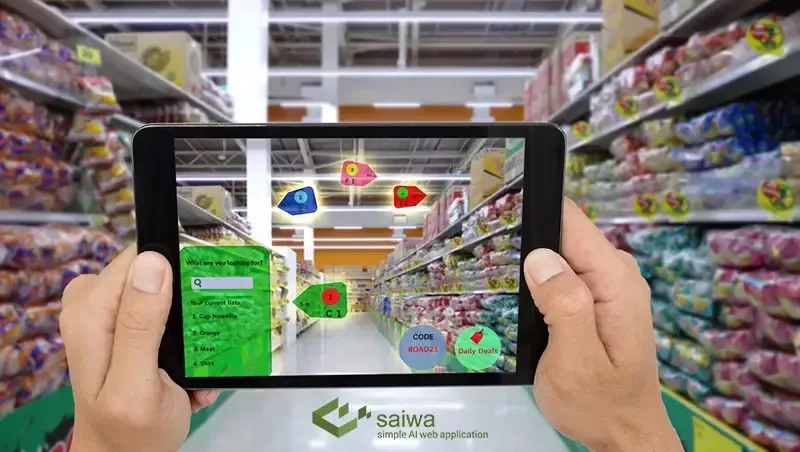Augmented reality (AR) has been hailed as one of the transformative technologies of the future, blending digital information seamlessly with the real world. At the core of enabling this breakthrough lies computer vision - the set of technologies that allow machines to perceive, analyze, and make sense of visual inputs from the environment. Computer vision in augmented reality algorithms allows AR systems to understand the 3D spatial context, detect objects and surfaces, track motion, and overlay realistic virtual graphics aligned with the physical world in real time. This powerful combination of digital and physical realms enabled by computer vision is revolutionizing how we visualize, interact, and extract insights across numerous domains from manufacturing to healthcare.
In this blog post, we explore the underlying computer vision techniques powering augmented reality experiences and the immense potential this technology offers across consumer and industrial use cases.
What is Augmented Reality?

Augmented reality is an enhanced version of the real world that integrates digital visual elements like 2D or 3D virtual objects and information into the natural environment. Unlike virtual reality, AR does not create a fully immersive simulated environment, but rather "augments" or layers computer-generated enhancements over a view of the actual real-world setting. This allows users to continue interacting with their familiar physical surroundings while visualizing contextual data and digital assets projected into that environment from the perspective of their mobile device camera or specialized AR headset.
AR unlocks new frontiers by combining the virtual and physical realms. It finds applications across domains like entertainment with gaming experiences, educational visualization tools, interactive navigation aids, furniture previews in retail, immersive training simulations and more. Core to delivering a seamless augmented reality experience is the application of computer vision.
Read Also: AI in Entertainment
How Computer Vision in Augmented Reality Works
Computer vision forms the crucial backbone that enables AR systems to analyze real-world visuals to achieve spatial understanding and overlay virtual graphics accurately:
1. Spatial Mapping and Scene Reconstruction
Using visual inputs from smartphone cameras or specialized depth sensors on AR headsets, computer vision algorithms construct detailed 3D maps of the environment. This process, known as simultaneous localization and mapping (SLAM), tracks feature points in the scene to model depth, surfaces, and spatial relationships.
2. Motion Tracking
As users or their device cameras move, CV algorithms continuously track visual motion across frames. Marker-based or marker-less techniques identify anchor points to update the 3D world and AR content positions relative to the changing viewpoint and device motion.
3. Object Detection and Recognition
Robust computer vision models identify real-world objects by detecting their presence across images or video frames and classifying them into known categories like people, cars, buildings, furniture, etc. This object understanding provides a key environmental context.
4. Surface Detection and Meshing
Beyond just object recognition, CV models identify real-world planar surfaces like walls, floors, and tabletops through geometric reasoning and shader reconstruction. This supports grounding virtual AR graphics onto corresponding physical surfaces realistically.
5. Lighting Estimation
CV algorithms estimate real-world lighting conditions by analyzing brightness and shadowing patterns in the environment. This data is used to modulate the rendering properties of virtual AR objects to blend in seamlessly with ambient illumination.
6. Occlusion Handling
By combining environment mapping with object detection outputs, computer vision in augmented reality rendering engines leverage CV outputs to determine where virtual objects should be occluded by real surfaces and where they should be visible for proper visual coherence.
These foundational CV capabilities synthesize visual inputs from the physical world into a machine-readable representational model that AR platforms use as a canvas to anchor and display virtual augmented content aligned with the real-world geometry, physics, and visual perspective of the user.
Technologies and Techniques
Advances across multiple domains have powered the proliferation of computer vision for augmented reality:
Hardware
Modern mobile chipsets and dedicated AR processors pack specialized neural engines and depth sensors optimized for accelerating CV workloads efficiently on-device. Technologies like the LiDAR scanner on Apple iPhones enhance AR's environmental understanding.
Computer Vision Algorithms
Techniques like convolutional neural networks achieve highly robust object detection across a multitude of classes. SLAM algorithms fuse data from cameras, inertial sensors, and depth sensors into cohesive spatial maps. Deep learning approaches like transformers are extracting rich semantic scene understanding.
Edge AI
Rather than offloading to the cloud, AR systems perform latency-sensitive CV processing at the edge of local processors close to the sensors. This ensures real-time responsiveness for AR applications while minimizing bandwidth needs.
The Application of Computer Vision in Augmented Reality

Computer vision in augmented reality is already enabling transformative use cases:
Consumer
AR filters and lenses in social apps like Instagram and Snapchat use CV for facial recognition, motion tracking and 3D animation. Gaming companies leverage CV environment mapping for realistic gameplay rendering.
Retail and eCommerce
Virtual try-on apps overlay virtual clothing, cosmetic rendering, and furniture placement in shoppers' environments through real-time CV mapping. This enhances buyer confidence through visualization.
Healthcare
AR surgery guidance systems use CV tracking to overlay rendered anatomy graphics precisely aligned to the patient's body to help surgeons during procedures.
Benefits of augmented reality powered by computer vision
The key benefits that augmented reality powered by computer vision deliver include:
Intuitive User Experience: By accurately anchoring digital information in the user's real-world environment, AR provides a more intuitive and natural interface for consuming content compared to traditional 2D screens.
Enhanced Context and Understanding: Overlaying data visualizations over real objects or environments enhances contextual understanding and learning for end users.
Remote Assistance: CV-based AR guidance enables efficient remote collaboration where experts can visually guide technicians using shared real-world views augmented with annotations and instructions.
Visualization and Previews: From furniture to fashion trials, AR provides an accurate visualization canvas for realistically previewing products in intended spaces before purchase.
Best Use Cases
Some key promising areas for leveraging computer vision in augmented reality include:
Manufacturing
AR instructions and IoT data visualization for assembly, maintenance through optical tracking of parts, tools, and environments to guide frontline technicians.
Architecture/Construction
AR previsualization of construction projects, renovation plans and building systems through CV-based environmental mapping at proposed sites.
Healthcare
AR visualization of internal anatomy, surgical instructions and projected guidance using CV tracking for more intuitive patient data review and procedures.
Field Service
AR knowledge capture and remote assistance capabilities using CV mapping to share physical environments across distributed teams for troubleshooting aid.
Best Use Cases
Some key promising areas for leveraging computer vision in augmented reality include:
Manufacturing
AR instructions and IoT data visualization for assembly, maintenance through optical tracking of parts, tools, and environments to guide frontline technicians.
Architecture/Construction
AR previsualization of construction projects, renovation plans and building systems through CV-based environmental mapping at proposed sites.
Healthcare
AR visualization of internal anatomy, surgical instructions and projected guidance using CV tracking for more intuitive patient data review and procedures.
Field Service
AR knowledge capture and remote assistance capabilities using CV mapping to share physical environments across distributed teams for troubleshooting aid.
Conclusion
Computer vision is the critical supporting pillar that enables augmented reality systems to effectively merge the physical and digital realms. Through core capabilities of computer vision in augmented reality like spatial mapping, object recognition and tracking, AR applications can construct an understanding of the real-world environment and accurately overlay virtual content in contextual alignment.
This seamless blending paves the way for more immersive, intuitive, and insightful user experiences across sectors from gaming and retail to manufacturing, healthcare and beyond. As computer vision and AR technologies mature further, we can expect to see increasingly sophisticated visualization and environment interaction that blurs the lines between virtual and reality. Computer vision's potent combination with augmented reality will continue redefining how we perceive and make sense of the world around us.
Note: Some visuals on this blog post were generated using AI tools.

